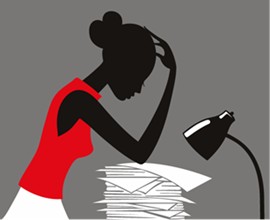This year, I am trying to tap into my creativity and intuition. On a practical level, this is unlikely to bring be more money, but it does mean broadening, or rather finding an outlet for, my wider interests. Continue reading
Category Archives: Creative writing
Writing Wishes
A genie grants you three writing-related wishes: what are your writing wishes and why?
Top Character Posts
Developing strong characters is central to writing engaging stories. Last year I did a lot of writing about how to develop characters. Here are my top character posts to help you develop your characters. Continue reading
Writing Activities
We can all use writing activities to get writing, keep writing, and to work through writer’s block – never more so than in November.
Pintrest to Develop Characters
Many Social Media platforms can be used to help you develop and track your characters. This week, I’m exploring just one of these: Pintrest, to see how useful it can be in developing a sense of a character and in creating an evocation of that character in order to flesh them out, ready for and beyond words on a page.
Tracking Your Characters
Keeping track of your characters can be a tricky business, especially if your novel has a complex plot with lots of twists and turns, or you have a number of characters who are all pivotal to the success of your storyline. How do you keep tabs on them all to ensure they have depth of character, are well rounded and believable rather than simply one-dimensional fillers who pull your story down around them?
 Firstly you need to simply keep track of who is who and how names are spelt – pretty basic stuff. You also need to keep track of the way your characters look: if you say one character has green eyes in chapter 2, you don’t want to forget this detail and give them blue eyes in chapter 15. Again, it sounds like basic stuff, but it is easy to confuse these small character details when a character from the beginning of the story reappears toward the end, and you’ve dealt with a number of other characters in between. And you need to keep track of your characters actions.
Firstly you need to simply keep track of who is who and how names are spelt – pretty basic stuff. You also need to keep track of the way your characters look: if you say one character has green eyes in chapter 2, you don’t want to forget this detail and give them blue eyes in chapter 15. Again, it sounds like basic stuff, but it is easy to confuse these small character details when a character from the beginning of the story reappears toward the end, and you’ve dealt with a number of other characters in between. And you need to keep track of your characters actions.
Methods for tracking your characters
- Index cards
Use index cards to list your characters. Clearly write the name of your character on the top of the card. Then list the basic details, like date of birth, where they were born, who their family is, who they are in a relationship with, who their friends are, who their enemies are…hey, even where they went to school if this is relevant to your particular story. Write a physical description of your character: what they look like, how they move, etc. You can file these cards alphabetically for ease of access.
- Address book
Buy a cheap address book and add your characters to that, including lists of all the important details as per above.
- Spreadsheets
Another way is by using spreadsheets. Enter the name of every character in your book – it’s much easier to do this as you go! Then add columns for all the important details as per above, eg: a column for family, a column for friends, etc.
- Accordian file
Grab one of those alphabetised accordion files. These are a great supplement to other methods because you can put found things in there. For example, you might trawl through magazines looking for faces or images that remind you of or symbolise your character. You might come across an article about something particular to one of your characters, eg: one might be a beekeeper and you find an article on the declining health of bees; or you might find relevant brochures, eg: a character might be a gardener and you pick up a brochure for your local botanic gardens. Get the idea?
- Timelines
Timelines are great too. These can help you track the individual journey and development of each character and can be created using paper and pens, index cards and spreadsheets with all your characters’ details. There are also a number of timeline programs that can help you with this. Microsoft offer timeline templates in both Word and Excel, Time Glider is one online timeline – great for collaborative writing projects.
Tracking your character resources:
- Tracking Your Characters
- Keeping Track of Your Characters
- Tracking the Inner Life of Your Fictional Characters
- TimeGlider
- TimeLinear
If you found this post useful, you might want to look at my previous blog What Are Plot, Subplot & Backstory?
…And keep an eye out for my blog this coming Friday about using social media for character development and tracking.
Photo credit: Girl with manuscript
What Are Plot, Subplot & Backstory?
It’s time to get clear about plot, subplot and backstory. I’ve just picked up the first draft of the novel I’ve been writing this year with the hope of starting to revise. I’m going to focus on three areas: plot, subplot, backstory. But first I need to work out what these elements are. And tackle the question: What is the difference between plot, subplot and backstory?
Working the Manuscript
You’ve written your first draft, you’ve let it sit in a drawer for a month, now it’s time to look at it again with fresh eyes. But how exactly do you take this very rough first draft and turn it into something remotely publishable?
Optimize Your Blog for Search Engines
Most people will probably discover your bog through a search engine. Yes, I’m talking about SEO – three letters that can set bloggers trembling with fear. But how do you make sure that search engines find your blog, especially given SEO itself appears like a minefield to many and is incredibly competitive?
Submit Your Stories
You’ve had a moment of creative insight and written madly and wildly, or you’ve toiled tirelessly on a story urging you for expression. You have painstakingly reviewed the story, working it through multiple drafts, fine tuning the structure, the language, the characters, the intricate plot. At last, the final piece is ready – the best story you’ve written so far! Now what?


